The term "microbes" here refers to both archaea and bacteria. In vent and seep habitats, these are often primary producers, living off the energy of inorganic minerals and gases. Some are methanotrophs, utilizing methane (natural gas) for energy. Worms fall into many phyla--such as (incomplete list) sipunculids (unsegmented peanut worms), polychaetes (segmented relatives of earthworms) including vestimentiferans (gutless worms with bacterial symbionts), hemichordates (acorn worms), and nematodes (microscopic roundworms). Nematodes (none pictured here) may be the most diverse phylum on Earth, with the number of species in the deep mud rivaling that of insects on land.
Tunicates are in the subphylum Urochordata in the Chordate phylum, along with our group the Vertebrata. Commonly known as sea squirts, these animals have a notochord in their larval stage, just as human embryos do. They have two siphons--intake and outflow--for filter feeding on plankton.
Unknowns are various animals we cannot identify.
A. Oregon Bathyal and Abyssal: Worms, Unknowns, Tunicates
(a) = abyssal plain (2300-2850m), (b) = bathyal zone--continental slope (1800-2000m) off Newport, Oregon; (mb) = Monterey Bay canyon, 3000m. Click pictures for larger images. |
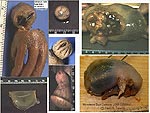 |
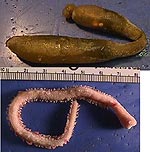 |
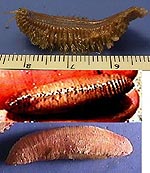 |
 |
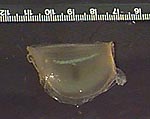 |
| unidentified/unknown animals |
Sipunculid (left) and
Polychaete(a)
Glycera sp |
Polychaetes: Seamouse Aphrodita (right) & Travisia sp
(a) (has H2S odour) |
Polychaete=? (mb)* |
Egg Capsule of shark??
(a)* |
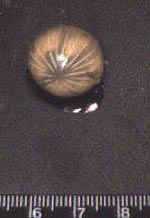 |
 |
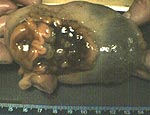 |
 |
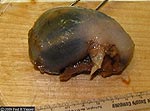 |
Grape Anemone
Oractis diomedeae??
(b)* |
Anemone?
Echiuroid? Priapulid? (b)* |
Sea Cucumber?
(a)* |
Unidentified*; Possible sea cucumber or tunicate; from 1200 m off Eureka, Calif. |
Mystery animal* from 2800m, Monterey Bay Canyon (mb), 2009 |
Note: some pictures contain a ruled centimeter scale.
Note that the structure of "Anemone??," a perfect sphere, appears identical to the base of "Anemone?"
*Species with "*" are ones we haven't identified fully.
B. Methane Seeps: Microbes, Worms, Unknowns
--on Calif. Eel-River Seeps off Eureka (510-525m) and Hydrate Ridge off Newport Oregon (600-890m); submersible video and microscope images.
Click pictures for larger images. |
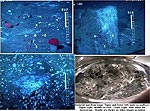 |
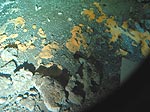 |
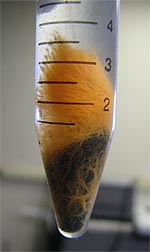 |
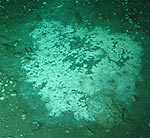 |
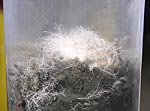 |
| Beggiatoa (and other species of) bacteria in mats and filaments** - microbes using sulfide and methane (Eel River, Hydrate Ridge) |
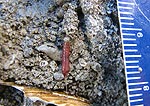 |
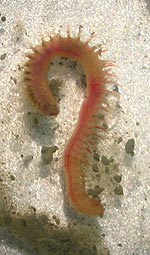 |
 |
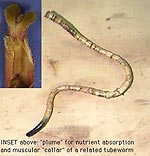 |
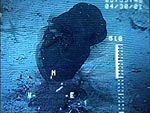 |
| Worm (new species?) living inside large carbonate rock formed by microbial metabolism with methane |
Seep worm |
Polychaete worms, including Dorvelleids, living off seep bacteria |
Cold-seep vestimentiferan(b) Lamellibrachia (lives off bacterial symbionts that live off gases); see Seeps/Vents page for more on these and on hydrothermal-vent worms |
Eggsac of an unknown animal |
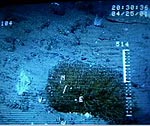 |
|
|
|
|
| Unidentified greenish bushy thing* |
|
|
|
|
**The long strands may be enteropneusts (animals)
Linda Kuhnz of the Monterey Bay Aquarium Research Inst. has images of burrowing (infaunal) deepsea animals from 900 - 3600 m off central California.
Next: Cnidaria
(and Porifera) .... |
|